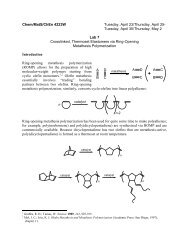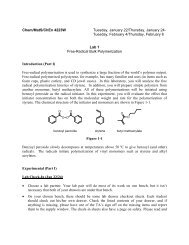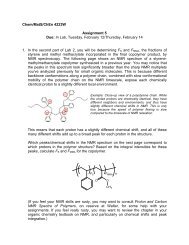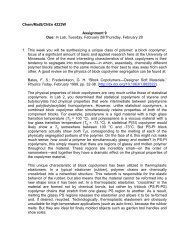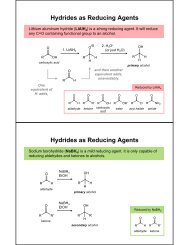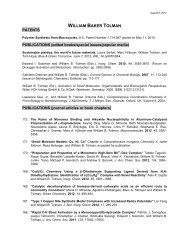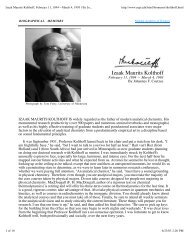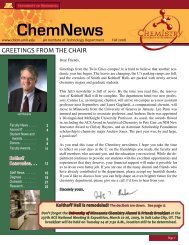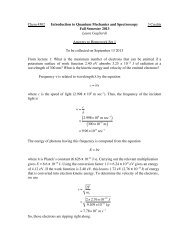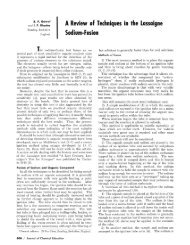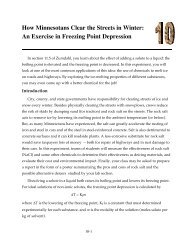Chem/MatS/ChEn 4223W Tuesday, April 2/Thursday, April 4 ...
Chem/MatS/ChEn 4223W Tuesday, April 2/Thursday, April 4 ...
Chem/MatS/ChEn 4223W Tuesday, April 2/Thursday, April 4 ...
Create successful ePaper yourself
Turn your PDF publications into a flip-book with our unique Google optimized e-Paper software.
Remove one pan and one lid for each of your three polymer samples from the containerlabeled "hermetically sealed". Record the mass of the pan and lid before adding any polymer.Record the masses in your laboratory notebook. Carefully load the pan with about 5 mg ofyour polymer sample. Try to make sure that no polymer is on the lip of the pan.Carefully place the lid on the pan, and crimp the pan using the press next to the balance.Press the pan first right side up, and then upside down. The TAs will assist you with thisprocess. It is important that the pan is well sealed, so that the polymer does not melt and leakout into the heating/cooling chamber.Place your sample pans into the auto-sampler, noting its position number. On the computerthat controls the DSC, insert all pertinent information for your three samples. Make you’rethe output filenames include your group number and the polymer identity. The DSC will expose your sample to three temperature ramps: from room temperature to 200°C, back to room temperature, and then up to 200 °C again. The TA will program theinstrument with the following temperature ramp instructions:Step 1: Equilibrate at 40 °C.Step 2: (Fill cooling unit if level is below 25%.)Step 3: Equilibrate at 25 °C.Step 4: (Set sampling interval to 1 sec/point.)Step 5: Keep isothermal for 1 min.Step 6: Ramp from 25 °C to 200 °C at a rate of 10 °C/min.Step 7: Keep isothermal for 5 min.Step 8: (Mark end of cycle 1.)Step 9: Keep isothermal for 1 min.Step 10: Ramp from 200 °C to 25 °C at a rate of 20 °C/min.Step 11: (Mark end of cycle 2.)Step 12: Keep isothermal for 1 min.Step 13: Ramp from 25 °C to 200 °C at a rate of 10 °C/min.End.The data that is generated will be posted to the course Data website, as individual files. Youwill analyze your files using TA Instruments’ Advantage software package; instructions forusing this software are in Appendix A of these instructions.Polarized optical microscopy (Apr 9/11 or 16/18; see schedule)You will be performing this experiment in groups of four. The group should collect a completeset of variable-temperature images on one PLLA sample, and then collect as much data aspossible on both optically impure samples.The TA will help you familiarize yourself with the polarizing microscope. Make sure youcan identify the polarizer, analyzer, condenser, and objective. In addition, make sure you



